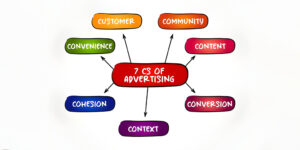Introduction
As we progress through 2024, the media planning landscape is evolving rapidly, driven by technological advancements, changing consumer behaviors, and new data-driven strategies. Staying ahead of these trends is critical for firms trying to optimise their media expenditure and increase their advertising effectiveness. Here’s a comprehensive look at the media planning trends for 2024 that are shaping the future of advertising.
Data-Driven Decision Making
In 2024, data continues to be at the heart of media planning. Collecting, analyzing, and leveraging data allows for more precise targeting and better-informed decisions.
- Advanced Analytics: Use AI and machine learning to analyze vast datasets, uncovering insights that drive more effective media strategies.
- Real-Time Data: Utilize real-time data to adjust media plans dynamically, optimizing campaigns on the fly to improve performance.
Omnichannel Integration
Consumers interact with business entities through a variety of touchpoints, therefore a seamless, integrated strategy is critical for successful media planning.
- Unified Campaigns: Develop campaigns that provide a consistent message across all channels, from social media and email to television and in-store experiences.
- Cross-Channel Attribution: Implement strong attribution models to better understand the influence of each channel on conversions and optimise accordingly.
Personalization at Scale
Personalization remains a key trend, with technological advancements enabling brands to deliver more tailored experiences to a broader audience.
- Dynamic Content: Implement strong attribution models to better understand the influence of each channel on conversions and optimise accordingly.
- Customer Segmentation: Employ sophisticated segmentation techniques to target specific audience groups with relevant messages.
Sustainability and Ethical Advertising
Consumers are increasingly concerned about the ethical and environmental effect of the brands they support. Media planning in 2024 must reflect these values.
- Sustainable Practices: Highlight sustainable practices in your advertising and choose media partners who prioritize environmental responsibility.
- Ethical Messaging: Ensure your advertising messages align with social values and promote inclusivity and diversity.
Emerging Technologies
New technologies continually reshape the media landscape, offering innovative ways to reach and engage audiences.
- Augmented Reality (AR) and Virtual Reality (VR): To produce engaging and dynamic advertising experiences, including AR and VR into your media strategies. .
- Voice Search Optimization: Optimize content for voice search as more consumers use voice assistants to find information and make purchases.
Programmatic Advertising
Programmatic advertising continues to grow, offering automated and efficient ways to buy and sell ad space.
- AI-Driven Programmatic: Leverage AI to enhance programmatic advertising, improving targeting accuracy and campaign performance.
- Transparency and Fraud Prevention: Focus on transparency and fraud prevention in programmatic buying to ensure ad spend is effective and reaches the intended audience.
Content Marketing Integration
High-quality content remains a cornerstone of effective media planning. Integrating content marketing with media strategies enhances engagement and builds brand loyalty.
- Native Advertising: Invest in native advertising that blends seamlessly with editorial content, providing value to the audience while promoting your brand.
- Branded Content: Create branded content that offers a fascinating tale and appeals to your target audience.
Influencer Partnerships
Influencer marketing is a powerful tool for reaching niche audiences and building brand credibility.
- Micro-Influencers: Partner with micro-influencers with highly engaged and loyal followings within specific niches.
- Long-Term Collaborations: Focus on long-term collaborations with influencers to build authentic relationships and more impactful campaigns.
Privacy and Compliance
With increasing regulations around data privacy, compliance is more critical than ever in media planning.
- GDPR and CCPA Compliance: Ensure that all media plans comply with data protection standards such as GDPR and CCPA.
- Transparent Data Practices: Maintain transparency with consumers about data collection and usage to build trust and avoid legal issues.
Performance Measurement and Optimization
Effective media planning requires continuous measurement and optimization to ensure maximum ROI.
- KPI Tracking: Define clear key performance indicators (KPIs) and use advanced analytics to track campaign performance against these metrics.
- A/B Testing: Regularly conduct A/B testing to determine the most influential creatives, formats, and channels.
Conclusion
The media planning landscape in 2024 is characterized by rapid technological advancements, increased emphasis on personalization, and a growing focus on ethical and sustainable practices. By embracing these trends, businesses can develop more effective media strategies that reach and resonate with their target audiences. Staying nimble and consistently optimising media campaigns will be critical to success in this dynamic and ever-changing market.
To learn more or to acquire our services, please contact us at info@paypercampaign.com





